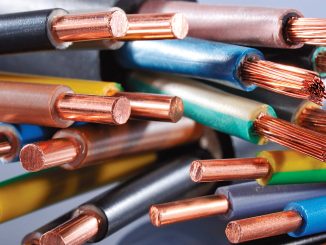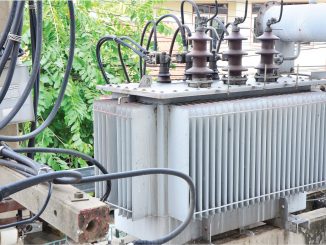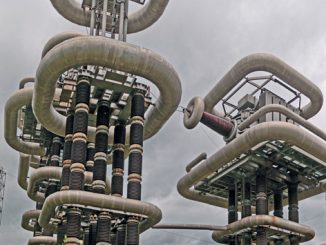 The demand for upgraded assets to ensure safety, reliable power supply and seamless business operations, is paramount. High performance conductors such as high temperature low sag (HTLS), and cables such as cross-linked polyethylene (XLPE) and underground cables, are increasingly gaining traction.
The demand for upgraded assets to ensure safety, reliable power supply and seamless business operations, is paramount. High performance conductors such as high temperature low sag (HTLS), and cables such as cross-linked polyethylene (XLPE) and underground cables, are increasingly gaining traction.
The substation and switchgear industry is undergoing continuous technological advancements across all voltage levels. Industry players are actively working on the development of substations and switchgear that are not only more intelligent, compact and reliable, but also environmentally friendly, with minimal time required for installation and commissioning. In this context, the adoption of digital substations is becoming increasingly prevalent within utilities. These solutions minimise the right of way (RoW) requirement while allowing network expansion in a reliable manner.
Metering technology has undergone a notable evolution, having progressed from manual meter reading to automated meter reading (AMR) and advanced metering infrastructure (AMI). These advancements form the foundation for smart meters and smart grids, leading to their increased adoption in tandem with the rise of smart grid implementation. Utilities leverage AMR and AMI for diverse applications, including outage management and load balancing, showcasing their versatility and efficiency in enhancing grid operations.
Furthermore, the digitalisation of distribution operations and processes offers utilities the capability to identify, prevent and promptly address faults, ensuring consistent and reliable power flow within the grid and to end-consumers. This shift towards digital solutions reflects a broader industry trend aimed at enhancing efficiency and operational effectiveness in meeting the evolving needs of modern businesses.
Cables and conductors
High-performance conductors such as HTLS conductors, as well as cables such as XLPE cables, underground cables and e-beam cables, have been gaining popularity. These efforts aim to integrate renewable energy efficiently and ensure reliable 24×7 power supply.
Utilities are increasingly adopting XLPE-insulated cables due to their enhanced resistance to thermal deformation, higher thermal tolerance and increased current-carrying capacity compared to traditional cables. These cables also offer superior tensile strength, elongation and impact resistance. In areas where obtaining RoW is challenging, utilities are deploying underground cable systems.
HTLS conductors, capable of withstanding high temperatures, provide approximately 30 per cent more current-carrying capacity than conventional conductors. They are instrumental in reconductoring/uprating existing lines to enhance power transfer capacity without modifying existing towers. Despite the potential that high temperature superconducting power cables have of carrying significantly more current than conventional conductors, they are yet to see commercial deployment in India.
Towers and structures
In recent years, there have been notable developments in tower technologies driven by factors such as urbanisation, constrained space availability and the urgent need to rapidly expand transmission infrastructure. Developers are now favouring towers that demand minimal RoW approvals, can be installed quickly and offer cost advantages. As a result, monopoles and narrow-base lattice towers are gaining preference over traditional lattice-type towers among utilities. This evolution extends to advancements in tower foundation designs, reflecting the industry’s commitment to innovation and efficiency.
Lattice-type structures are preferred for extra high voltage transmission in India due to their self-supporting nature, but face RoW challenges in urban areas. Monopole structures, with polygonal tubular sections, have gained popularity for their reduced footprint, faster installation and lower maintenance. Multi-circuit towers enhance power transfer efficiency, reducing overall RoW requirements and offering cost savings, especially in challenging environments. Emergency restoration system towers, made of stable box sections, provide a lightweight and rapidly deployable solution for immediate power restoration after a transmission tower collapses, and suits various installation methods.
Switchgears and substations
The power distribution sector is witnessing a rapid increase in the adoption of digital substations, which utilise real-time data for improved diagnostics and reduced downtime. Gas-insulated switchgear (GIS) substations, which employ sulphur hexafluoride (SF6) gas, are becoming popular due to their compact size, safety features and resistance to environmental factors. Hybrid switchgear, which integrates air-insulated switchgear and GIS technologies, offers a cost-efficient balance between land use and facility construction, optimising space and cost for future extensions. Vacuum switchgear, initially popular for medium voltage applications, is gaining traction for high voltage ones, driven by its compact size, higher reliability and reduced maintenance needs. The renewed interest in vacuum switchgear can be attributed to a focus on reducing the use of SF6, as it is a compact and reliable alternative in challenging environmental conditions.
Distribution automation
A distribution management system (DMS) provides real-time visibility into utility operations, offering insights into circuit loading and overall system performance. Utilising DMS, utilities can proactively despatch service crews to address outages before customers report them. Geographic information systems are employed to spatially share critical information, aiding in the identification of potentially damaged assets and facilitating the sectionalisation of faulted circuits to minimise customer impact. Additional capabilities such as distribution automation (DA), substation automation and fleet management enhance grid intelligence. DA allows remote monitoring and control of distribution assets, improving fault detection, isolation and automated power restoration through supervisory control and data acquisition (SCADA) or DMS-based systems and field equipment. It needs a data rate of 9.6-100 kbps and has stringent latency requirements, and commonly uses cellular technologies and the unlicensed 900 MHz spread spectrum band for backhaul communication.
SCADA is crucial for distribution utilities, helping manage three network layers: sub-transmission (66 KV and 33 KV), primary distribution (11 KV) and secondary distribution (0.415 KV). Outages at the sub-transmission level impact thousands of customers, necessitating remote monitoring and control of network elements. SCADA is a software application that acquires real-time data from connected network equipment under both normal and abnormal conditions. This data is transmitted to the control centre, enabling timely decision-making for remote switching operations and prompt addressal of issues.
Advanced DMS (ADMS) is gaining traction among distribution utilities as another noteworthy technology. ADMS automates outage restoration, enhancing the overall performance of distribution grids, and provides comprehensive support for distribution management and optimisation. In addition to identifying faults and restoring power, ADMS handles peak demand management, volt/ volt-ampere reactive optimisation, and conservation through voltage reduction. It also provides support for microgrids and electric cars. This multifaceted approach has positioned ADMS as a crucial technology for the modernisation and efficiency improvement of power distribution systems.
AI, IoT and ML
The integration of artificial intelligence (AI) and machine learning (ML) has the potential to bring about a significant transformation in the operations and efficiency of power distribution utilities. Tailored to the specific needs of these utilities, AI and ML applications can be seamlessly incorporated across the entire value chain. By analysing data collected through installed sensors, AI and ML modules can be developed to provide valuable insights. These insights can enable the prediction of network failures, allowing for proactive scheduling of interventions to prevent disruptions. Discoms are increasingly employing conversational AI and chatbots to manage routine client enquiries. Mobile applications and website chatbots have become common tools used by discoms to handle frequent consumer interactions. Furthermore, AI and ML applications can be used for demand forecasting and time-of-day predictive analysis.
The implementation of internet of things (IoT)-based solutions can significantly enhance the efficiency of distribution networks. IoT, a system of interconnected devices transmitting data, facilitates real-time data interaction through sensors and actuators, with data stored in the cloud. IoT devices detect flaws promptly, allowing for immediate corrective actions without the need for extensive physical inspection of distribution networks and equipment. Online monitoring, enabled by IoT, facilitates location determination of equipment in need of repair.
For instance, Bharti Airtel has partnered with Secure Meters to deploy narrow band-IoT (NB-IoT) services that will power 1.3 million homes in Bihar through a smart meter solution. This will be India’s first NB-IoT solution on a narrow band, with a fallback option that will work on 2G and 4G. It will ensure real-time connectivity and uninterrupted transfer of critical data. NB-IoT is a low-power, wide area radio network technology developed by 3GPP, which can facilitate a wide variety of IoT devices and services including smart meters.
Conclusion
Amidst the ongoing processes of decarbonisation, decentralisation and digitalisation within the energy sector, utility companies are actively undertaking measures to transition and enhance their power systems, in alignment with anticipated future grid requirements. Simultaneously, market participants are dedicating efforts to incorporate innovative substation and switchgear technology, as well as cable and conductor technologies characterised by reduced space requirements and minimised outage risks, reflecting a heightened emphasis on ensuring uninterrupted power supply. Digitalisation is making systems and processes more connected, allowing improved network management and operations. However, these technologies necessitate enhanced cybersecurity, besides manpower training and capacity building for efficient uptake. Overall, the industry’s collective focus on technological advancement is geared towards building a robust and resilient energy ecosystem.



